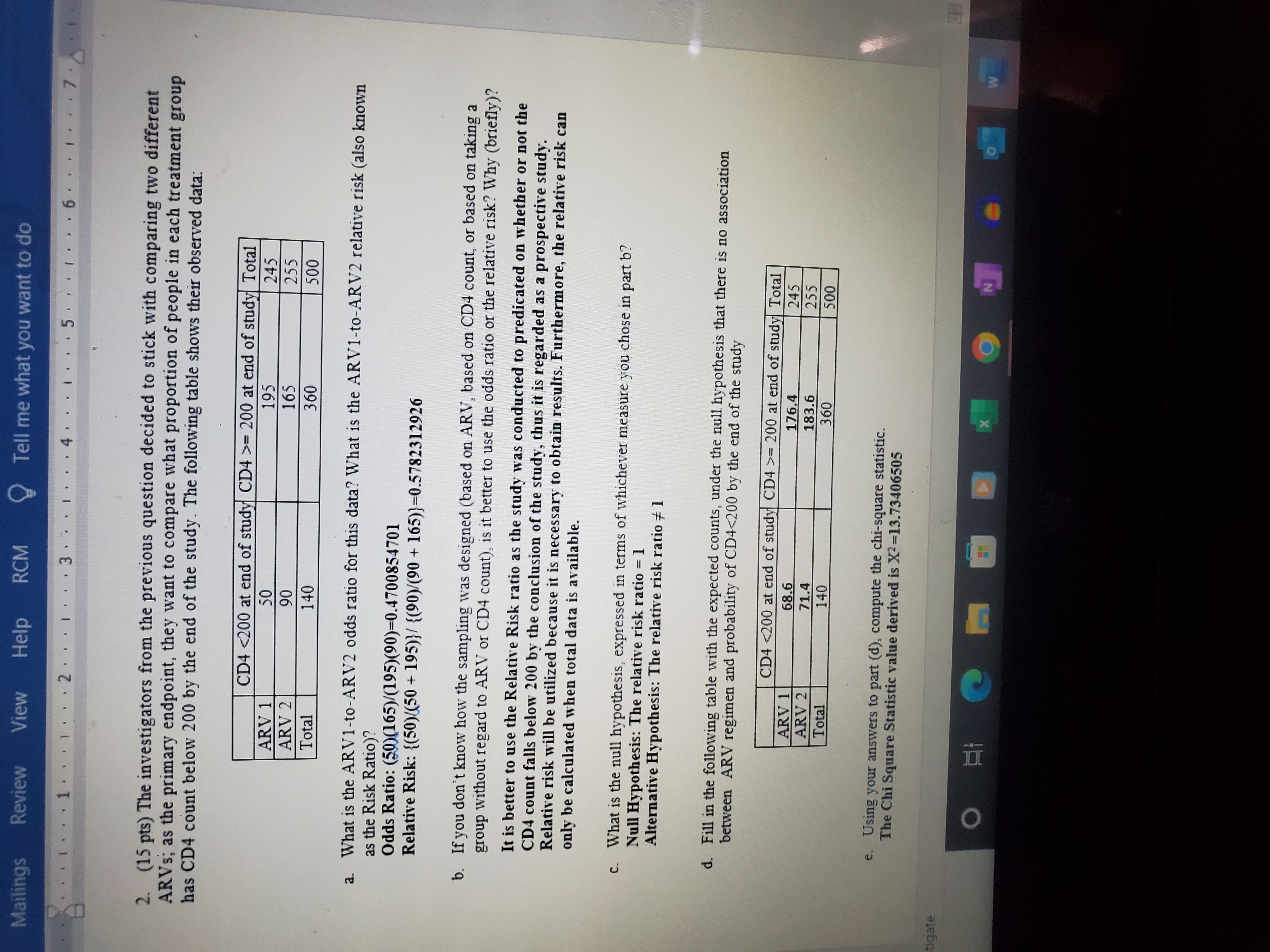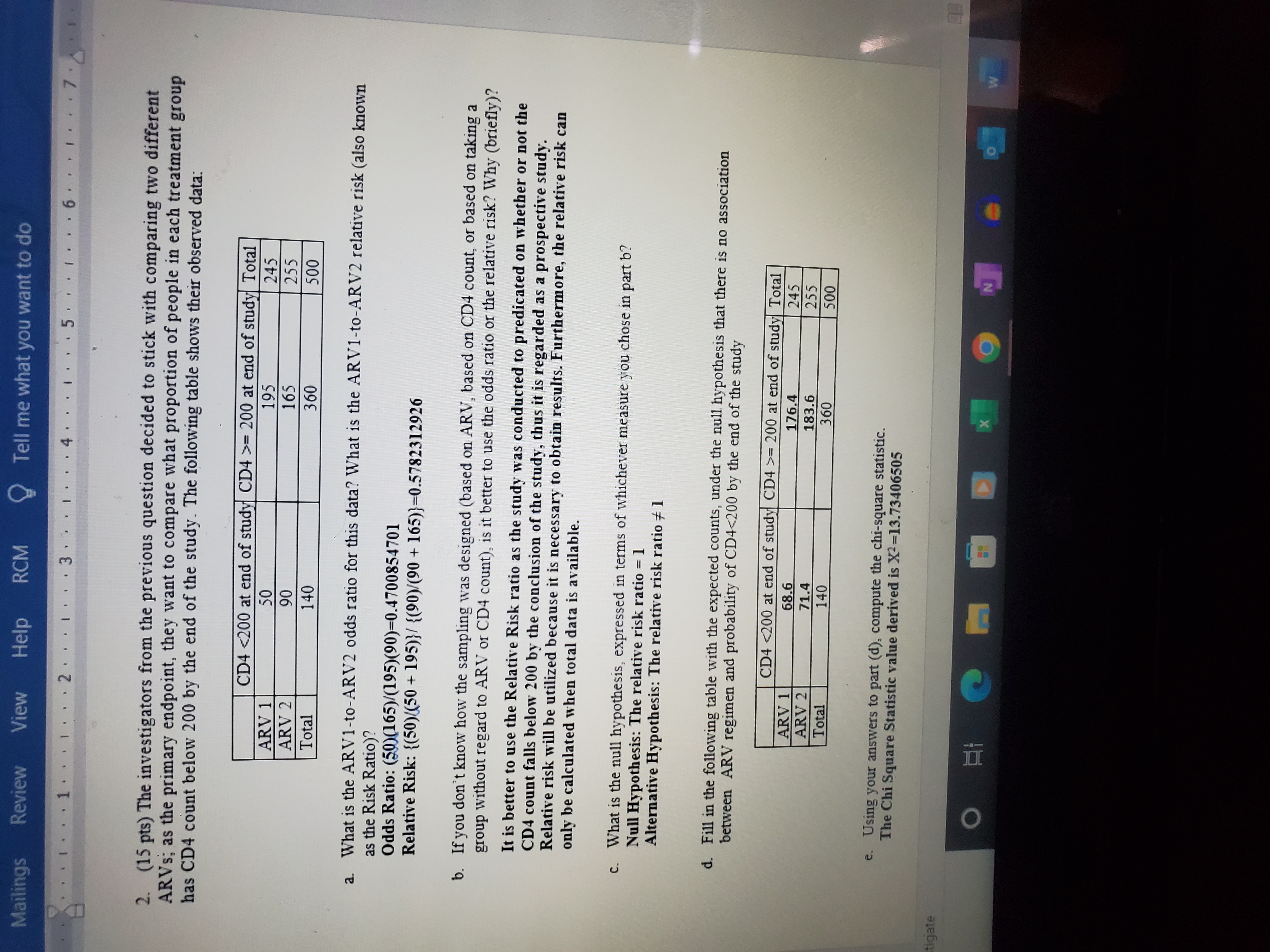Question
I need help with 3, the picture is context. 3. As a secondary endpoint, you compare the actual value of CD4 (as a continuous measure)

I need help with 3, the picture is context.
3. As a secondary endpoint, you compare the actual value of CD4 (as a continuous measure) at the end of the study (1yr) between 2 treatment groups. a. what kind of a test could you use to compare the CD4 count between the 2 groups, of you also want to adjust for covariance (age, gender, baseline, C4, time since diagnosis)
b. What are 2 tests (different from your answer to pt a) that you could use to compare the CD4 count between the 2 groups if you did NOT feel you needed to adjust for covariance ( since this is a randomized trial, they should be reasonably well balanced)?
c. Many of the patients were very sick, and quite a few died from AIDS-associated Infections or TB before 1 year. These patients do not have an observed CD4 count at the end of the study. Can you validly compare the distributions of CD4 counts for the 2different treatment groups, given these missing data? if yes, describe how. if no, explain not

Step by Step Solution
There are 3 Steps involved in it
Step: 1

Get Instant Access to Expert-Tailored Solutions
See step-by-step solutions with expert insights and AI powered tools for academic success
Step: 2

Step: 3

Ace Your Homework with AI
Get the answers you need in no time with our AI-driven, step-by-step assistance
Get Started


